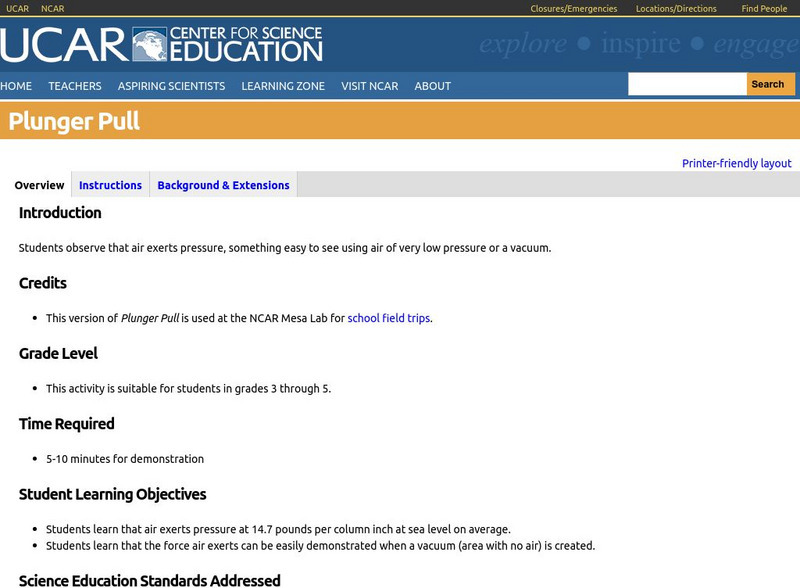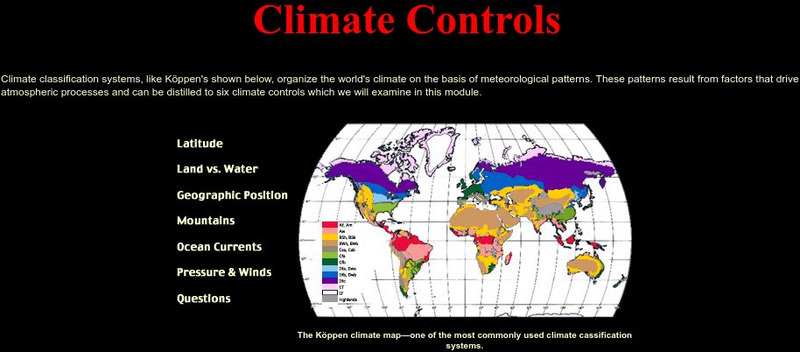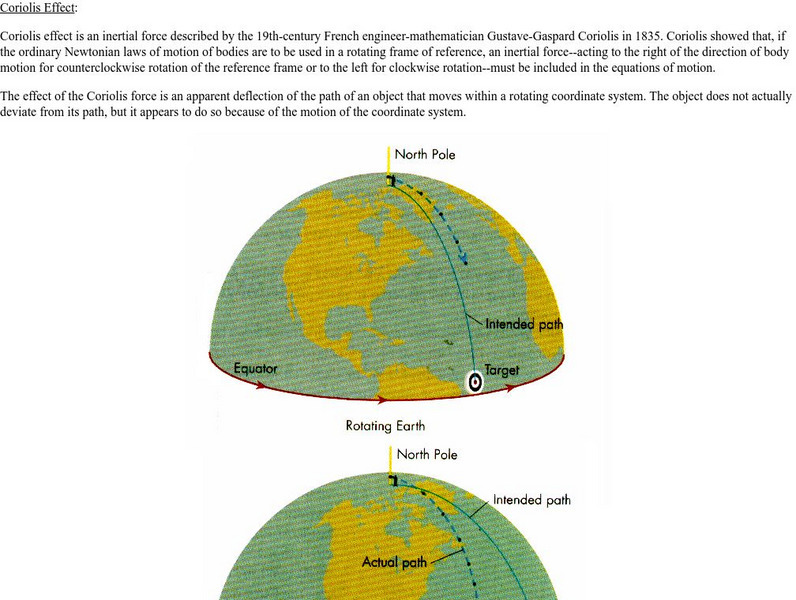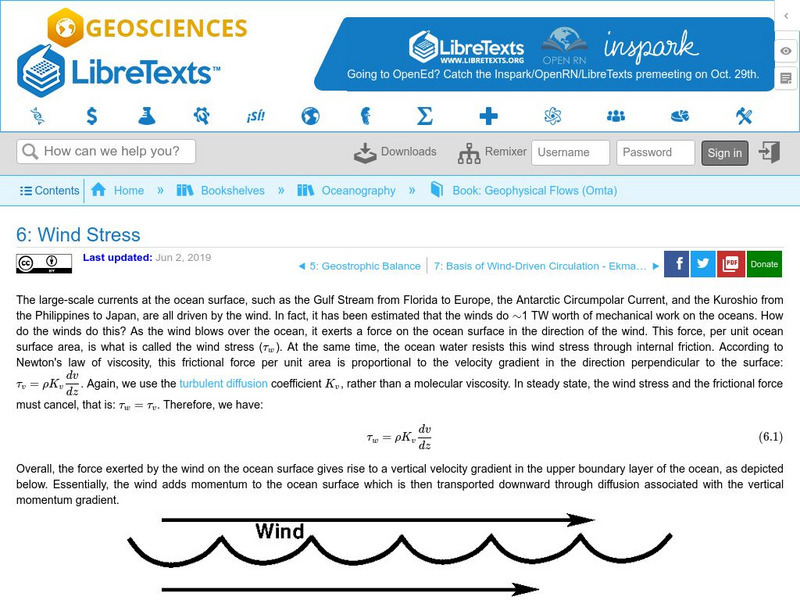Other
Airship and Blimp Resources: History of Hot Air Airships
Describes the invention of the hot air airship by Don Cameron in the 1970s, and the evolution of its design and production over the years.
Read Works
Read Works: Weather: Air Patterns
[Free Registration/Login Required] An informational text about wind patterns and how they relate to clouds, storms, and lightning. A question sheet is available to help students build skills in reading comprehension.
MadSci Network
How Come When You Open a Window the Door Is Pulled In?
From the Mad Scientist Network. Using a question and answer format, this page explains the answer to the question "How come when you open a window the door is pulled in?" This intriguing everyday phenomenon is explained in terms of air...
University Corporation for Atmospheric Research
Ucar: Plunger Pull
Students observe that air exerts pressure, something easy to see using air of very low pressure or a vacuum.
Other
Steve Spangler Science: Egg in the Bottle Trick
This resource provides information and demonstrates the egg in the bottle trick.
Libre Text
Libre Text: Pressure Gradients
From high school geography class, you may remember that "air tends to flow from high pressure to low pressure". To understand why this happens, it is key to realizing that gasses (but also liquids) exert a force on their surroundings...
University Corporation for Atmospheric Research
Ucar: Balloon Inside a Bottle
Air takes up space. It's only when air in the bottle escapes that more air is easily added!
USA Today
Usa Today Weather: Using Winds and a Barometer to Make Forecasts
Describes the ways in which wind direction and barometric pressure can be used by the amateur weather forecaster to make predictions about the weather.
Alabama Learning Exchange
Alex: I'm So Crushed
In this activity, students will have an opportunity to solve a mystery. They will discover why a soda can collapses during a demonstration due to the effects of changes in temperature and atmospheric pressure. Students will gain further...
Other
Usc: Climate Controls
An effective presentation of six main climate controls: latitude, land vs. water, geographic position, altitude, currents, pressure and winds.
University Corporation for Atmospheric Research
Ucar: Create a Portable Cloud
In this hands-on activity, students experiment to discover how moisture, pressure, temperature, and condensation nuclei play a role in cloud formation.
Technovation
Curiosity Machine: Challenges: Build a Stomp Rocket
With a little engineering, students can design a stomp rocket that is propelled by air pressure to fly at least 10 ft in the air. This website contains tips, a lesson plan, and a place for students to document their engineering design...
Creative Science Centre
Creative Science Centre: Newton's Experiments
A collection of projects that recreated Isaac Newton's experiments as he would have built them in the seventeenth century. The projects include the mechanical advantage possible using three levers, the trajectory of a projectile, air...
Other
Digital Library for Earth System Education: Teaching Box: Essentials of Weather
A suite of lessons focusing on the basic elements of climate and weather. Inquiry-based exploration of extreme weather events and the factors of weather including clouds, wind, air pressure, temperature, and the water cycle.
The Franklin Institute
Franklin Institute Online: Make Your Own Barometer
At this site from the Franklin Institute Online, you are given instructions how to make a simple barometer as part of an activity in which you make a weather station for observation.
University of Oregon
University of Oregon: Coriolis Effect
This site from the University of Oregon provides a great explanation of the Coriolis Effect and then gives several chart type examples to help the understanding of it.
NASA
Nasa: Beginner's Guide to Aerodynamics
Includes exhaustive information and a wealth of activities pertaining to aerodynamics and the physics of flight.
National High Magnetic Field Laboratory
Magnet Academy: How Potato Cannons Work
A slideshow carbo-loaded with information on how the pneumatic potato cannon works. [3:00]
Libre Text
Libre Text: Wind Stress
The force exerted by the wind on the ocean surface gives rise to a vertical velocity gradient in the upper boundary layer of the ocean. Essentially, the wind adds momentum to the ocean surface which is then transported downward through...
Other
U.s. Search and Rescue Task Force: Predicting Weather
Information on what weather is to begin with, then progresses to how scientists can predict the weather. Common ways to predict weather are also included such as use of a barometer and rain gauge.
University Corporation for Atmospheric Research
Ucar: Balloon on a Bottle
In this activity, students brainstorm various ways that an uninflated balloon placed over a bottle's opening can be inflated without touching the balloon.
Science Bob Pflugfelder
Science Bob: Make Your Own Balloon Rocket!
This site contains a brief procedure for building (and launching) a balloon powered rocket. Introduces concepts of air pressure and propulsion.
Oklahoma Mesonet
University of Oklahoma: Overview of Meteorology
The University of Oklahoma explores numerous types of weather and atmospheric changes, as well as the reasons behind them. Content details the four seasons, common meteorological variables, the vertical structure of the atmosphere, how...
Other popular searches
- Air Pressure Experiment
- Air Pressure Straw
- Air Pressure and Winds
- Air Pressure & Wind
- Air Pressure Activity
- Weather Air Pressure
- Air Pressure Maps
- Air Pressure and Temperature
- Air Pressure Temperature
- Air Pressure and Barometer
- Egg Air Pressure Experiment
- Air Pressure Experiment Ball
















